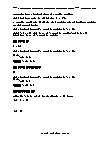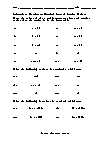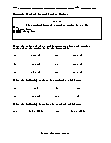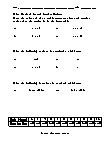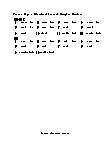Standard Form of Complex Numbers Worksheets
What is the Standard Form of Complex Numbers? Complex numbers are typically comprised of two components. One component is known as the real part, while the other is known as the imaginary part. The standard form of the complex number is written as 'a +bi' were 'a' is the real part, and the 'bi' is the imaginary part. An example of the complex number would be '4+5i', where 4 represents the real part, and the 5i represents the imaginary part. Real numbers with no imaginary component can also be represented and written as 3+0i. Also, an imaginary component with no real number can be represented and written as 0 + 6i. For performing addition and subtraction on complex numbers, we will add the real parts together and the imaginary parts together. Let's say we have an equation like: (6+2i) + (4+3i)= (6+4) + (2i+3i) = 10 + 5i. Similarly, we can also perform multiplication on complex numbers. The tip here is to solve the problem by FOIL rule that stands for first, outer, inner, and last. While multiplying complex numbers for multiplying binomials, we have to remember the role of 'i'. 'i' is the square root of the negative 1. i2 equals to -1.
-
Basic Lesson
Demonstrates general rules for writing the standard form of complex numbers. A complex number is either a real number or an imaginary number or the sum of both. The standard form of a complex number is a + ib.
View worksheet -
Intermediate Lesson
Explores how to a unique approach writing the standard form of complex numbers. Where a is the real part of a complex number and b is the imaginary part of a complex number.
View worksheet -
Independent Practice 1
State the values of the a and b components for each complex number when the number is in the form a+ib. The answers can be found below.
View worksheet -
Independent Practice 2
Features another 20 Standard Form of Complex Numbers problems.
View worksheet -
Homework Worksheet
Standard Form of Complex Numbers problems for students to work on at home. Example problems are provided and explained.
View worksheet -
Topic Quiz
10 Standard Form of Complex Numbers problems. A math scoring matrix is included.
View worksheet
Too Old?
Teacher, I can't solve this problem.
Any five year old should be able to solve this one.
No wonder I can't do it then, I'm nearly ten!
